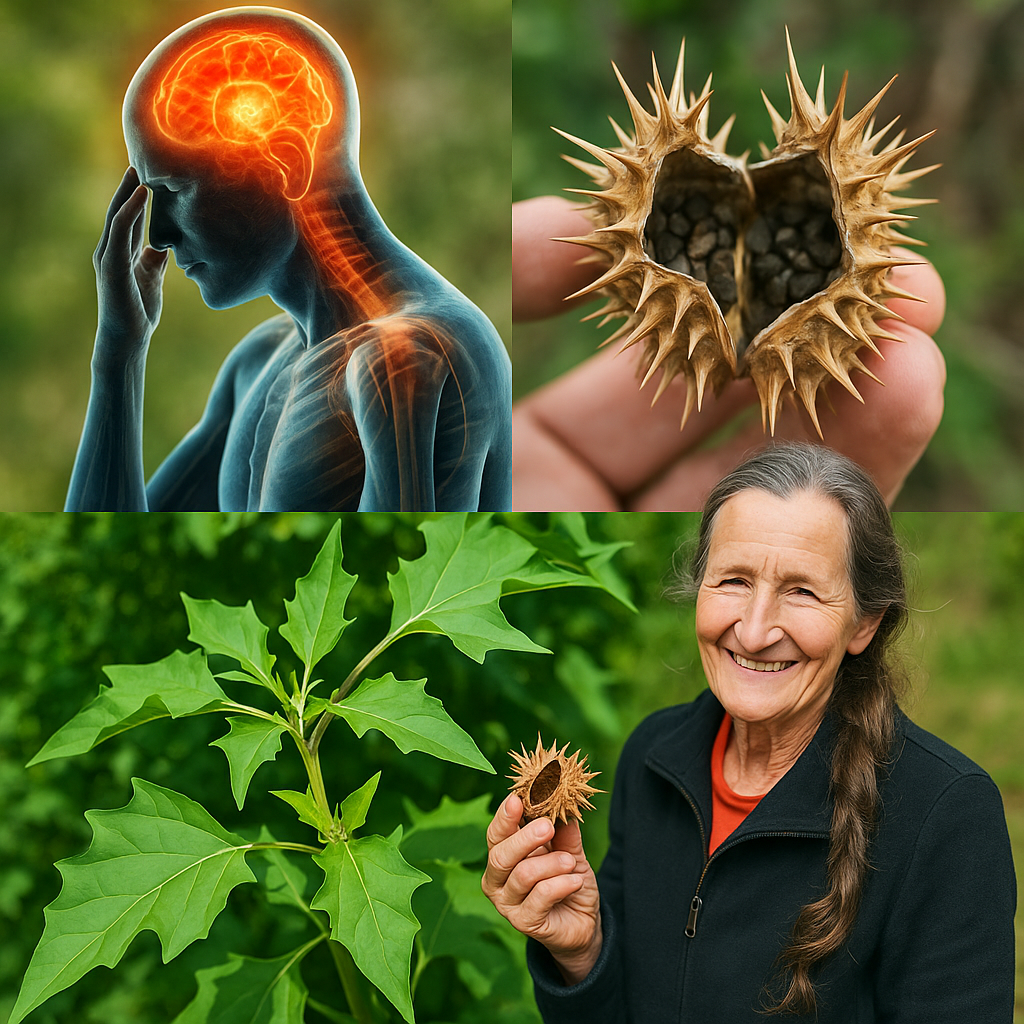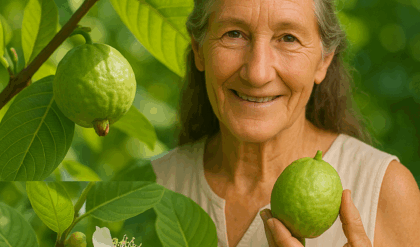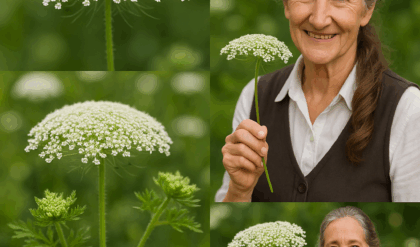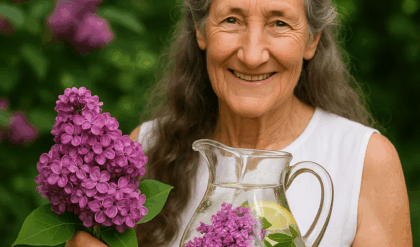Imagine a plant so strikingly beautiful that it captivates your senses with its trumpet-shaped flowers and sweet fragrance, yet harbors a deadly secret capable of turning a peaceful garden into a scene of chaos. Meet Datura stramonium, commonly known as jimsonweed, devil’s trumpet, or thorn apple—a plant that blends allure with peril. This member of the nightshade family is not just a botanical curiosity; it’s a potent health risk lurking in plain sight. In this article, we dive deep into the toxic nature of Datura stramonium, its effects on human and animal health, and essential prevention tips to keep your loved ones safe.

A Botanical Beauty with a Dark Side
🌿 Datura stramonium thrives in disturbed soils, from roadside patches to neglected garden corners, making it a common yet dangerous presence worldwide. Native to the Americas, this plant has spread globally, adapting to various climates with ease. Its appearance is deceptive: reaching up to 2 meters tall, it boasts broad, lobed leaves, fragrant white or pale purple flowers that bloom at night, and spiny seed pods that burst open to release tiny black seeds. While its aesthetic appeal makes it a tempting addition to ornamental gardens, every part of this plant—leaves, flowers, seeds, and roots—is laden with toxic alkaloids.
The plant’s chemical makeup includes atropine, scopolamine, and hyoscyamine, compounds that disrupt the nervous system by blocking acetylcholine, a critical neurotransmitter. These alkaloids are responsible for the plant’s psychoactive and medicinal properties, but they also make it a significant health hazard. Understanding the risks associated with Datura stramonium is crucial for anyone who values garden safety and public health.
The Toxic Threat: Health Risks of Datura Stramonium
⚠️ Ingesting even a small amount of Datura stramonium can trigger a cascade of alarming symptoms. The plant’s alkaloids affect both the central and peripheral nervous systems, leading to effects that range from uncomfortable to life-threatening. Common symptoms include dry mouth, blurred vision, rapid heartbeat, and difficulty swallowing. In severe cases, individuals may experience hallucinations, delirium, seizures, coma, or even death. These risks are not limited to humans—pets and livestock are equally vulnerable, making Datura stramonium a concern for households and farms alike.
Children are particularly at risk due to their curiosity and tendency to explore their surroundings. A single seed pod, mistaken for a harmless garden find, can lead to accidental poisoning. Pets, too, may chew on the plant, unaware of its dangers. The unpredictable nature of Datura stramonium’s toxicity means that no part of the plant is safe, and the severity of symptoms can vary based on the amount consumed and the individual’s health.
Why Datura Stramonium Persists in Gardens
🌸 Despite its dangers, Datura stramonium is sometimes cultivated for its ornamental value. Its striking flowers and unique seed pods add an exotic flair to landscapes, attracting gardeners unaware of its toxic profile. In some cultures, the plant has been used in traditional medicine or as a hallucinogen, further contributing to its allure. However, these uses come with significant risks, as the line between a therapeutic dose and a toxic one is razor-thin.
The plant’s resilience adds to its prevalence. Datura stramonium thrives in poor soil conditions and can spread rapidly, often appearing uninvited in gardens or agricultural fields. Its seeds can remain viable in the soil for years, making eradication challenging. For gardeners, this means that even a single plant can become a long-term problem if not addressed promptly.
Real-Life Consequences: Accidental Poisonings
🚨 Accidental poisonings from Datura stramonium are more common than many realize. In households with children or pets, the plant’s presence poses a constant threat. Curious toddlers may ingest seeds or leaves, while pets may nibble on plants during outdoor play. In some cases, individuals seeking its hallucinogenic effects underestimate its potency, leading to severe health consequences.
Emergency rooms have reported cases of Datura stramonium poisoning, often characterized by confusion, agitation, and cardiovascular distress. These incidents highlight the need for greater awareness of the plant’s dangers. Gardeners and homeowners must prioritize plant identification to prevent such emergencies, especially in areas where Datura stramonium grows wild.
Prevention: Safeguarding Your Garden and Loved Ones
🛡️ The key to protecting your family and pets from Datura stramonium lies in proactive prevention. Start by familiarizing yourself with the plant’s appearance. Its trumpet-shaped flowers, spiny seed pods, and lobed leaves are distinctive features that can help you identify it in your garden or nearby areas. Regular garden inspections can catch Datura stramonium before it spreads, as early detection is critical.
If you find Datura stramonium, remove it carefully. Wear gloves to avoid skin contact with the plant’s sap, which can cause irritation. Use a shovel to dig up the entire root system, as leaving fragments behind can lead to regrowth. Place all plant material in a sealed bag and dispose of it in a way that prevents accidental exposure, such as through municipal waste services.
For households with children or pets, consider creating a plant-free buffer zone in high-traffic areas of your garden. Educate family members about the dangers of unknown plants, emphasizing that no part of a plant should be ingested without expert guidance. If you’re unsure about a plant’s identity, consult a local botanist or extension service for assistance.
What to Do in Case of Exposure
🚑 If you suspect that someone has ingested or come into contact with Datura stramonium, act quickly. Time is critical in cases of poisoning. Call emergency services or a poison control center immediately, providing details about the exposure, including the plant’s appearance and the symptoms observed. Do not induce vomiting unless instructed by a medical professional, as this can worsen the situation.
While waiting for help, keep the affected person calm and monitor their condition. If possible, collect a sample of the plant for identification by medical staff, but handle it with care to avoid further exposure. Prompt treatment, which may include activated charcoal, supportive care, or antidote administration, can significantly improve outcomes.
Choosing Safer Alternatives for Your Garden
🌷 The risks of Datura stramonium make it an unwise choice for home gardens, but you don’t have to sacrifice beauty for safety. Opt for non-toxic, visually appealing plants that offer similar aesthetic benefits. For example, trumpet vines or morning glories provide vibrant, trumpet-shaped flowers without the health hazards. Native plants suited to your region are also excellent choices, as they support local ecosystems while minimizing maintenance.
When selecting plants, research their safety profiles, especially if you have children, pets, or livestock. Resources like local gardening clubs or university extension programs can provide guidance on creating a safe and stunning garden. By prioritizing plant safety, you can enjoy your outdoor space with peace of mind.

The Bigger Picture: Raising Awareness
📢 Datura stramonium’s dual nature—beautiful yet deadly—serves as a reminder of nature’s complexity. While its historical uses in medicine and folklore are fascinating, its modern-day risks demand caution. By sharing knowledge about Datura stramonium, we can empower communities to make informed decisions about their gardens and landscapes.
Public health campaigns, gardening workshops, and school programs can play a vital role in educating people about toxic plants. Encouraging responsible gardening practices, such as proper plant identification and safe disposal, can reduce the incidence of accidental poisonings. Together, we can create safer environments for everyone.
Conclusion: A Call to Action
✅ Datura stramonium may captivate with its ethereal beauty, but its toxic secrets pose a serious threat to health and safety. By understanding its risks, identifying its presence, and taking swift action to remove it, you can protect your loved ones from harm. Choose safer plant alternatives, stay vigilant, and spread awareness about the dangers of this deceptive plant.
Your garden should be a sanctuary, not a source of danger. Take the first step today: inspect your outdoor spaces, educate your family, and commit to a toxin-free landscape. With knowledge and caution, you can ensure that your garden remains a place of joy and tranquility for years to come.





